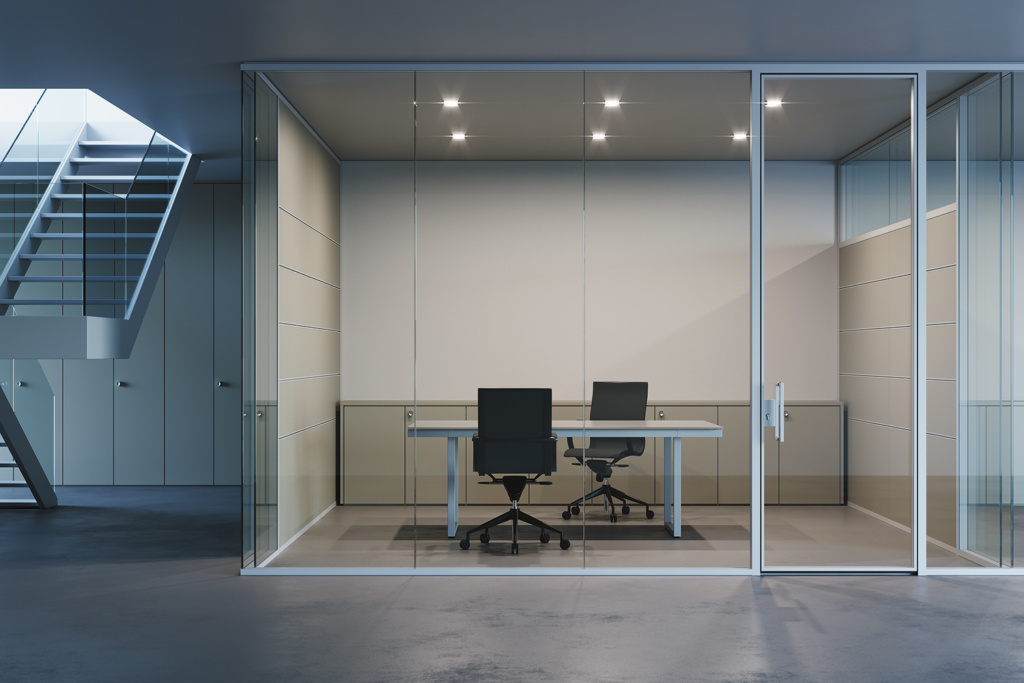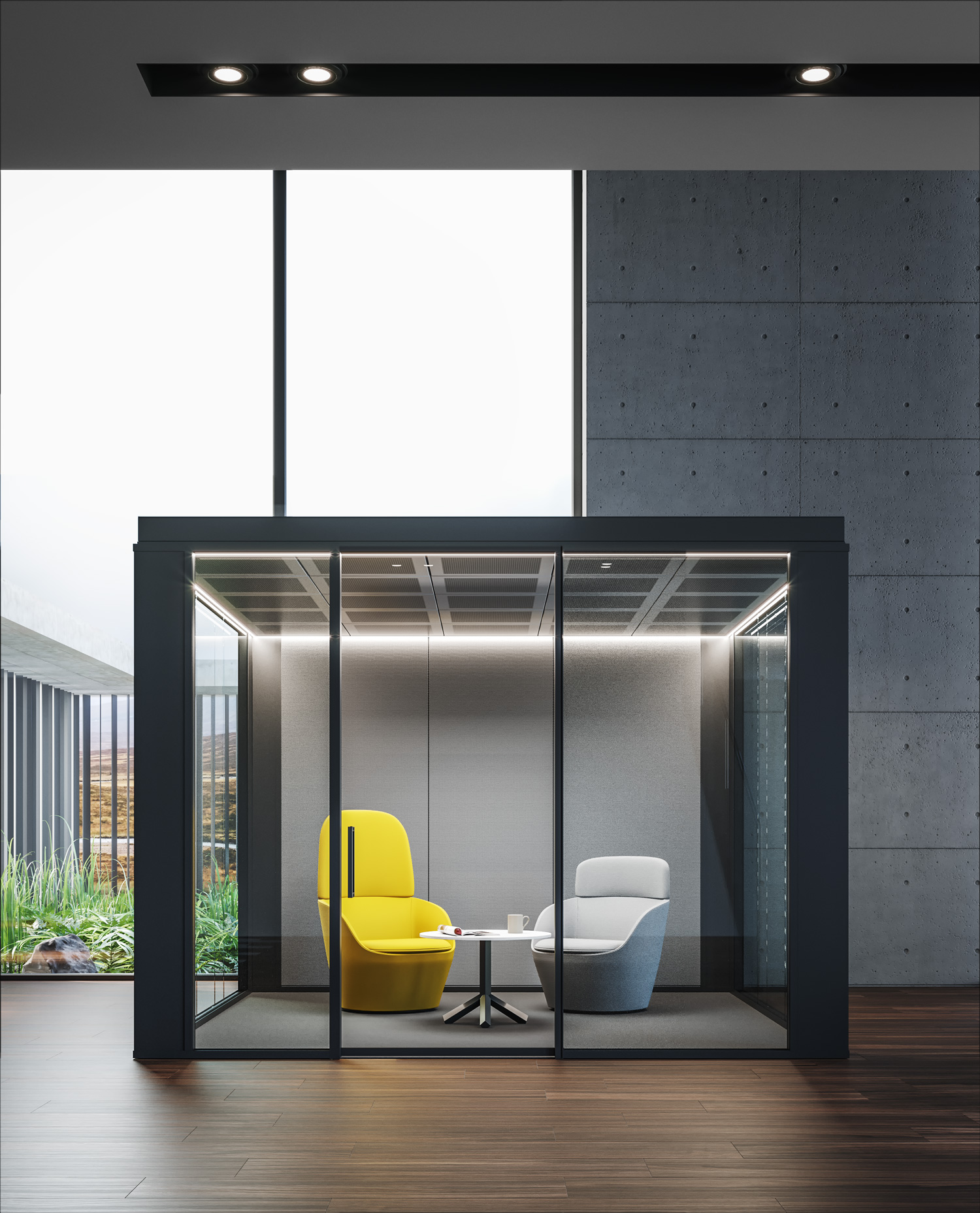We’ve always kept a keen eye on the way the workspace has changed over the years. We’ve talked on various occasions about how the evolution and integration of technologies has progressively led to new work cultures and the shaping of spaces that deviate from convention. Today, we want to focus on the huddle room.
How open-plan workspaces are evolving: the huddle room
According to a paper by Frost & Sullivan, there are around 30 million huddle rooms around the world. We’re talking about a trend that’s gained serious traction in recent years thanks to the rising popularity of the open-plan space, according to a range of different principles and requirements.
So, in short, what is a huddle room precisely? With workplaces heading in a more open direction, there’s a need for them to include properly defined – and possibly soundproofed – spaces for small work groups of between 3 and 6 people, at the most, to huddle in, as it were.
Modern technologies have allowed the huddle room to set itself up as both a physical space for company employees needing a private area for short teamwork sessions and meetings, and as a virtual space when a room is needed for holding conference calls.
With no need to book a space in advance – as is instead the case with traditional large meeting rooms – huddle rooms let you organize quick, impromptu meetings, hence the need tor a space on each floor or in each work area, and one that’s easy for people to get to.
What started out as a simple room catering for one-to-one communication has evolved progressively in recent years – with the introduction of phones, small workstations, and audio and video technology – into a sort of little independent enclave with a floor area of no more than 10 or 12 sq metres. Its small footprint means it should have a suitable supply of fresh air, even though it’s not intended to be occupied for long periods at a time.
Providing a comfortable, hi-tech area with plenty of design content, huddle rooms have become an integral part of a dynamic team’s communication and collaboration, embracing new technological and social trends, and providing a particularly effective solution for a growing segment of users who require more flexibility in their jobs.
Indeed, what these spaces do so well is offer a more flexible approach so that occupants have a less formal environment to work in, thus making them a catalyst for millennials seeking an oasis for collaboration.
Compared to a few decades ago, when collaborative technology was built in and limited to just large, expensive meeting rooms, the implementation of comfortable micro-rooms – outfitted with audio- and video-conferencing equipment – is becoming strategic in supporting cooperation both among in-house staff and people working remotely, helping them feel included and actively engaged in the conversation.
What’s more, in these comfortable and connected spaces, it’s easier to encourage a team to share objectives and strategies.

Privacy and soundproofing: the Frezza partition wall
Our partition walls – like those in the K82 collection – reflect this kind of requirement: placed in an open-plan workplace, they deliver just the right level of privacy, insulating a space from the surrounding environment in a natural, dynamic way.
Glass, melamine or wood panels can be slotted into the channels in the extruded aluminium profiles. This type of wall comes in double glazed, single centre glazed, offset glazed or solid panel versions. It’s easy to appreciate just how effective these partitions are in delivering this sort of fluid privacy.
Another key aspect is the level of acoustic privacy. The huddle room truly comes into its own when it’s designed to ensure the least possible impact in terms of noise. More specifically, in terms of both noise getting out and noise getting in.
Working a huddle room into your layout is clearly the best way to get the most out of your available space, and design a modern, functional workplace.

Part of the article was published in the Office Layout magazine, no.178, July-September 2019 issue

